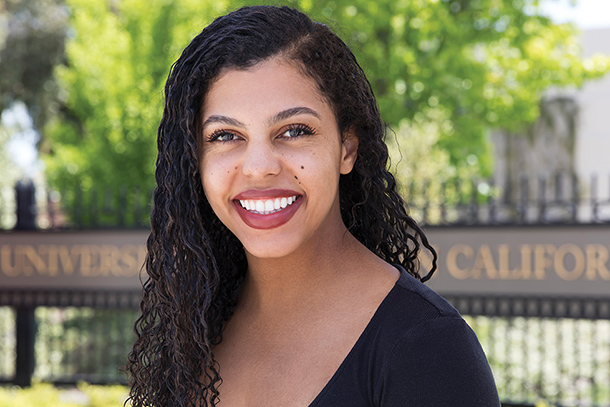Melodie Daniels’ drive to become a physical therapist is stronger than most.
“For me, being able to have a successful career in this field — it was like eating,” the 24-year-old said. “It was something I was craving.”
Daniels, an experienced personal trainer and athlete, recently started USC’s hybrid DPT program, a new format that combines online learning with in-person, hands-on immersion experiences.
Leading the way
“USC really strives to be diverse and looks for opportunities to improve. But right now, I’m the only black girl in the [hybrid] program,” said Daniels, who also serves as the hybrid DPT class president.
Physical therapy is known for having incredibly low numbers of African American professionals. Only 5% of practicing physical therapists are African American, according to the U.S. Bureau of Labor Statistics. The percentage of African Americans in physical therapy education programs has hovered around 3% throughout the past decade, according to the Commission on Accreditation in Physical Therapy Education.
“The idea of being able to use my story to help other people drives me,” she said. “It’s important to pave the way and show other minority women that this [career] is an option for them.”
A difficult road
While Daniels was committed to becoming a physical therapist, her determination was tested along the way.
After receiving a bachelor’s degree in physical therapy from San Diego State University, she applied to 20 physical therapy programs and was rejected by each one.
“I spent $5,000 on applications and didn’t get in. My GPA just wasn’t there because I had to financially support myself,” Daniels explained.
To put herself through school, Daniels worked full-time as a personal trainer at 24 Hour Fitness. A typical day would start at 4 a.m., with Daniels’ schedule alternating between clients and classes until about 10 p.m.
“And then I would wake up and do it all over again,” she said. “I worked so much during the first two years of my undergrad that I almost got kicked out of the program. It was really rough.”
To stay in school, Daniels wrote a letter, expressing her dedication to the program and profession.
“From then on, I still worked just as much, but I pretty much never slept and got straight As until I graduated,” she said. “I wanted to do it; PT is one of the few things in life I’ve never questioned.”
To remain on her path, Daniels launched her online personal training business, became a certified yoga instructor and graduated from Point Loma Nazarene University, with a master’s in sports performance, which gave her the experience needed to join USC’s physical therapy doctoral program.
“That process of having to fight taught me that I really love PT,” she said. “It’s an incredible opportunity to help people through movement and make an impact in their lives.”
Daniels said her drive comes from watching her mother. “She was a single mom at 15 and only had an eighth-grade education,” Daniels said.
About a year ago, Daniels says her mother completed her PhD in nursing.
“She’s someone who, regardless of circumstances, makes things happen,” Daniels said. “If the plumbing went out, she would fix it; if I needed a dress, she would sew it; if we needed food, she would grow it. I saw that work ethic — she’s my biggest role model for sure.”
Reaching for diversity
Still, being a minority, especially in the medical field, can be a challenge.
“Some people automatically don’t trust you because of how you look, and it’s unfortunate,” she said. “USC constantly talks about reaching out to people of different races and backgrounds and how diversity adds value to the profession. I think more schools need to do that so people [of color] feel comfortable applying.”
To draw more minorities to the physical therapy profession, Daniels would like to see more outreach at high schools and colleges, as well as discussions around diversity being incorporated into curricula.
Daniels recently attended a speaker series at USC in which professors from a variety of backgrounds, including African Americans, shared their experiences.
“It was eye-opening for students to hear about some of the struggles these professionals faced because of their background or race,” she said. “When I have the time, I’d like to do more public speaking and be able to talk to [young] people more one-on-one.”
For now, Daniels remains focused on her end goal: owning her own business.
“I’m nurturing my online personal training as much as I can, so I can transition that into a private practice when I graduate,” she said. “I’d like to combine physical therapy with personal training and include other practitioners — chiropractic, massage therapy — for a holistic, integrated approach.”
— Jamie Wetherbe


